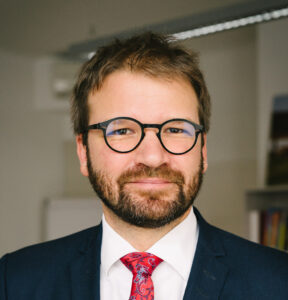An interview with Herwig Ostermann, Managing Director of Gesundheit Österreich GmbH, on the crisis faced by the health systems, potential solutions, and the concept Health for all Policies.
Interview: Dietmar Schobel
HEALTHY EUROPE
Are the health systems in Europe facing a crisis?
Herwig Ostermann: Yes, if we compare the current situation with ten or twenty years ago, we must indeed call it a crisis. Even then, there was pressure especially as cost increases needed to be reduced and financing of the health systems had to be secured. Now there is added pressure from growing staff shortages. Besides this, the crises in society currently experienced in Europe and around the world have a direct and indirect effect on the health systems as well. In addition to the war in Ukraine and inflation, there are also the ongoing challenges presented by climate change and demographic shifts.
HEALTHY EUROPE
What is the best approach to dealing with this crisis?
Herwig Ostermann: Provided that digitalisation is employed correctly, it can be an important lever and make working easier. And we must try to motivate people who are currently not in work to join or return to the health system. To achieve this, on the one hand it is important to improve working conditions. On the other hand, it is all about placing the attractiveness of working in the health system in the foreground and communicating this appropriately.
A relatively large health workforce does not automatically increase the quality of the care.
HERWIG OSTERMANN, MANAGING DIRECTOR OF GESUNDHEIT ÖSTERREICH GMBH
HEALTHY EUROPE
What makes this kind of work so attractive?
Herwig Ostermann: People who work in the health system are of great benefit to the community and usually have a high standing. Also, jobs in health systems are generally very secure and you don’t have to worry about being out of work. But attracting more staff will not solve the problem on its own. In the European Union, the employee/patient ratio in the health systems differs from country to country. At the same time, however, we know that a relatively large health workforce does not automatically increase the quality of the care. And so we also have to consider other ways of relieving pressure on the health systems while contributing to better health in the population. The concept “Health for all Policies” uncovers new possibilities here.
HEALTHY EUROPE
Can you describe the concept?
Herwig Ostermann: It is based on the “Health in all Policies” concept and refers to the fact that the most important factors that influence people’s health are found outside the traditional health system, such as in the areas of social, education, environmental, labour market, transport and economic policy. If measures are taken in these social sectors, their effects on health also need to be taken into account. The concept “Health for all Policies” expands this approach to include one key component: it focuses on the co-benefits that are created for other social sectors if they take health aspects into account as well during planning and in processes.
HEALTHY EUROPE
Where are such co-benefits found?
Herwig Ostermann: One example is when companies that promote the health of employees and maintain their capacity to work also enjoy a better economic performance as a result. Another is when schools that develop into health-promotion organisations also create better conditions for teaching and learning in the process. New ideas can and should be implemented in the health system itself as well, of course. Increasingly, the health system needs to go beyond exclusively caring for patients, and also promote the health of employees, patients and people in the region – and additionally be oriented on climate protection. On a policy level, orientation on the concept “Health for all Policies” can help to better fulfil the United Nations Sustainable Development Goals.
HEALTHY EUROPE
You are managing director of Austria’s public health institute. How would you describe the range of responsibilities in general at such an institution?
Herwig Ostermann: Despite all the differences in the national health systems and also the public health institutes in the European countries, there are many similarities. Monitoring and controlling infectious diseases are among the “traditional tasks”, but since the 1970s at the latest there has also been a broader understanding of the responsibilities at national public health institutes. This includes, for example, a focus on non-communicable diseases, prevention and health promotion, and also on intersectoral cooperation as an important prerequisite for better health of the population.
HEALTHY EUROPE
What role can be played by knowledge exchange between European countries in the area of public health?
Herwig Ostermann: It is only possible to a certain extent to transfer ideas from one health system to the next, from one country to another. That said, health systems can be improved from the inside, and you can learn from other countries in certain smaller areas. At European level it would therefore be a good idea to intensify knowledge exchange between the nations and especially between their public health institutes. For example, this can involve collecting models of good practice for various areas of the health system. The International Alliance of National Public Health Institutes – IANPHI, to which Gesundheit Österreich GmbH has belonged since 2019, intends to make a key contribution here. And both nationally and internationally, it is a matter of forming new, intersectoral alliances not just on a policy level, but also scientifically – such as by public health researchers intensifying exchange with economic and environmental researchers, entirely in the sense of “Health for all Policies”.

Health economist Herwig Ostermann (44) studied Economics and Health Sciences in Austria and Ireland, and has been Managing Director of Gesundheit Österreich GmbH (GÖG) since 2016. GÖG is Austria’s research and planning institute for the healthcare sector and is also the central office for health promotion in Austria, employing around 300 people.
